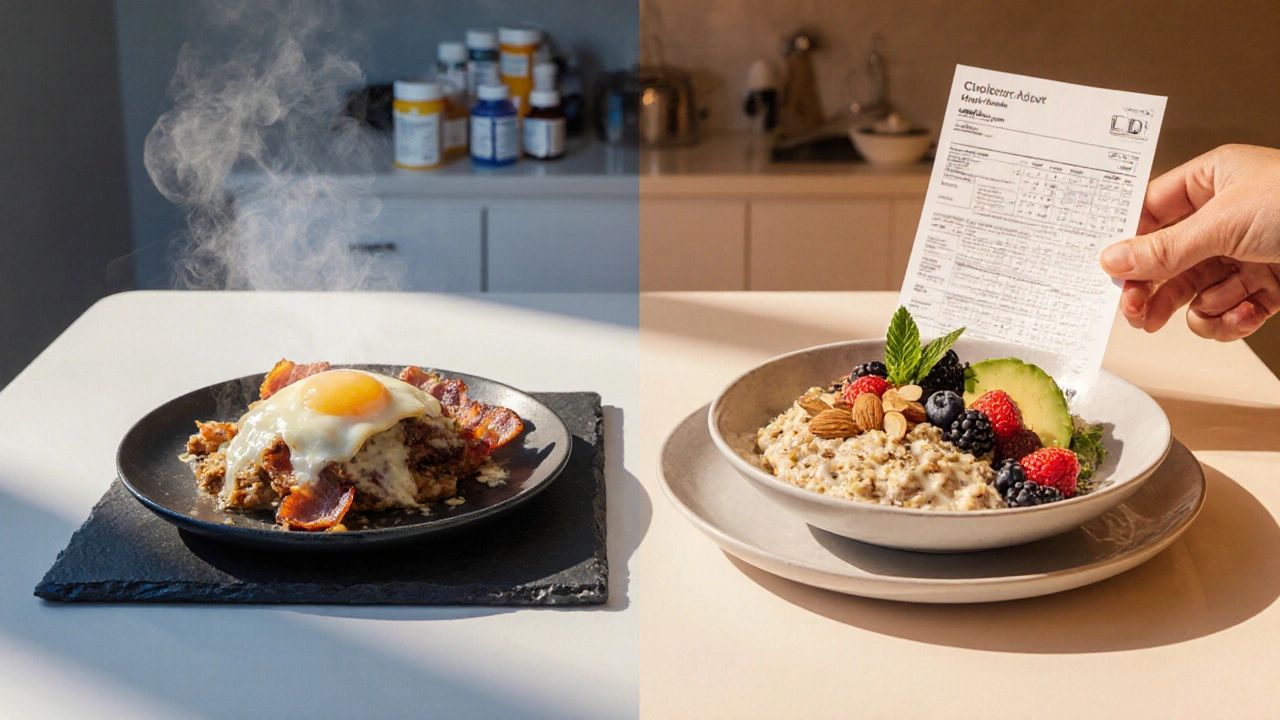Discover how a whole‑food plant‑based diet can lower LDL cholesterol, the key foods that help, a sample weekly menu, and tips to avoid common pitfalls.
Cholesterol-Lowering Foods: What Actually Works and What to Eat
When it comes to managing cholesterol-lowering foods, dietary choices that reduce LDL (bad) cholesterol and support heart health. Also known as heart-healthy foods, these aren’t magic pills—they’re everyday items that, when eaten regularly, make a real difference in your blood lipid levels. High cholesterol doesn’t always come from eating fat. It’s often about what you’re not eating: fiber, plant compounds, and healthy fats that tell your body to stop overproducing cholesterol. The good news? You don’t need supplements or expensive pills to start seeing results. Just swap a few things on your plate.
One of the most powerful tools in your kitchen is soluble fiber, a type of dietary fiber that binds to cholesterol in the gut and carries it out of the body.Oats, beans, apples, and psyllium are packed with it. Eating just 5 to 10 grams a day can drop your LDL by up to 5%. That’s like getting a low-dose statin from your breakfast bowl. Then there’s plant sterols, natural compounds found in nuts, seeds, and vegetable oils that block cholesterol absorption.Sterol-fortified foods aren’t magic, but adding a daily serving—like a spoonful of fortified spread or a handful of almonds—can knock another 5–10% off your LDL.
Don’t overlook omega-3 fatty acids, fats that reduce triglycerides and inflammation, even if they don’t directly lower LDL.Fatty fish like salmon, mackerel, and sardines are the best sources. You don’t need to eat them every day—twice a week is enough to support your arteries. And while olive oil gets all the attention, avocado oil, flaxseed, and chia seeds also help. These aren’t just "healthy fats"—they’re active players in your body’s cholesterol cleanup crew.
What’s missing from most diets? Legumes. Lentils, chickpeas, black beans—they’re cheap, filling, and loaded with fiber and plant protein. Studies show swapping out red meat for beans even once a day can lower LDL by 5%. Same with nuts: a small daily handful (about 1.5 ounces) of almonds, walnuts, or pistachios improves cholesterol markers better than most low-fat diets. And don’t fear the whole fruit—apple skins, pear peels, and orange membranes hold the fiber that does the work. Juicing strips that out.
There’s no single "superfood" that fixes high cholesterol. It’s the pattern. Eating more whole plants, less processed stuff, and replacing saturated fats with unsaturated ones adds up. You won’t see overnight changes, but within 3 to 6 weeks, many people notice their numbers moving in the right direction. The posts below dig into exactly what works, what doesn’t, and how real people have used food to cut their cholesterol without drugs. You’ll find comparisons of top choices, practical meal ideas, and what science says about things like oatmeal, avocado, and even dark chocolate. No hype. Just what you need to eat tomorrow to start feeling better.

